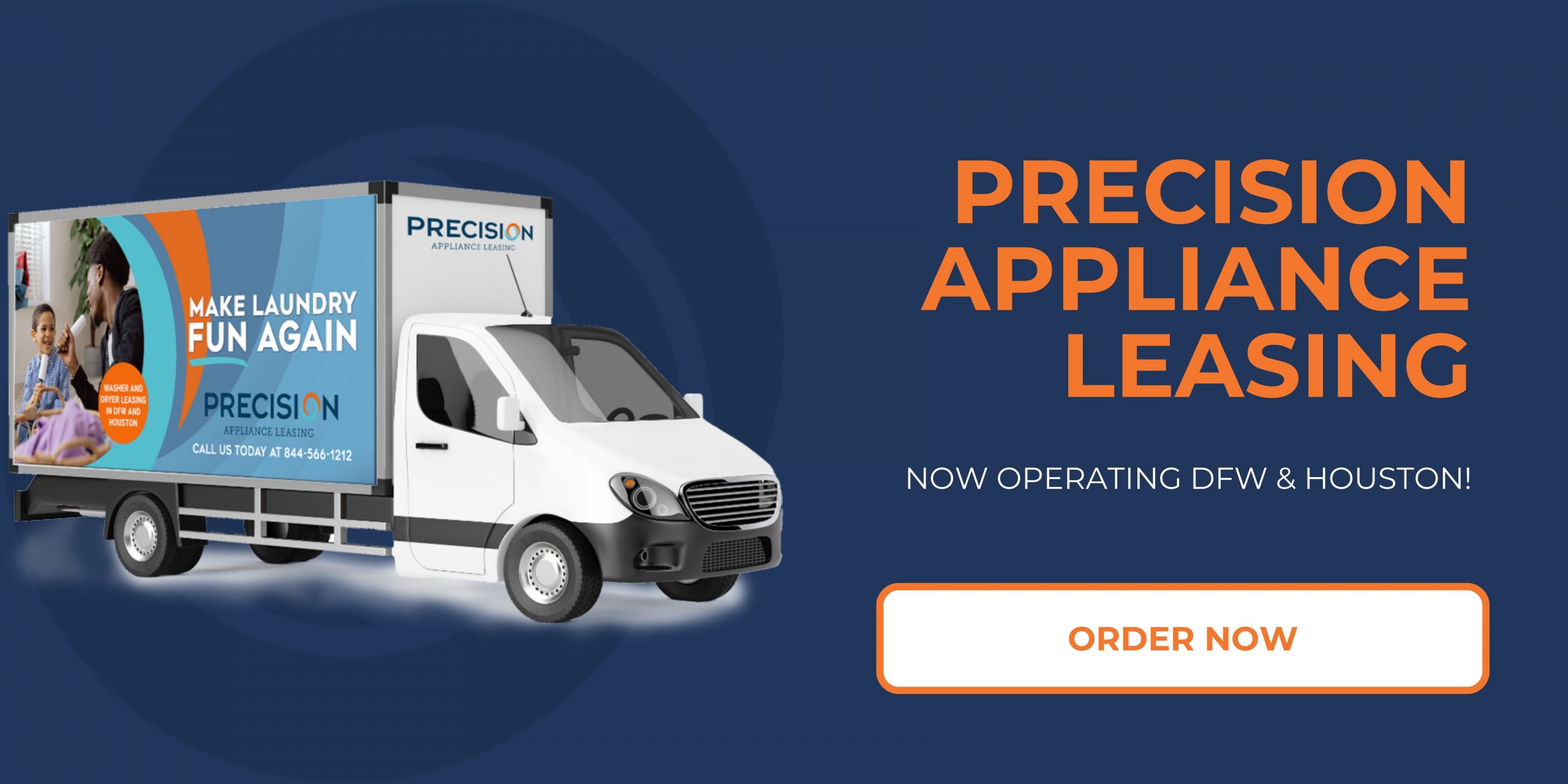Washer and Dryer Leasing 101: What’s Included and What to Expect in Urban Areas
As urban living continues to gain popularity, the demand for convenient and cost-effective home solutions has surged, particularly when it comes to essential appliances like washers and dryers. For many city dwellers, the prospect of leasing these appliances presents a practical alternative to purchasing them outright. Washer and dryer leasing offers a versatile option that aligns with the fast-paced, dynamic lifestyle of urban residents who often prioritize flexibility and affordability over long-term commitment.
Leasing washers and dryers comes with a range of benefits tailored to meet the unique needs of urbanites. With space constraints commonly found in city apartments, owning bulky appliances can pose logistical challenges, making leasing an attractive solution. Leasing typically allows tenants to enjoy the convenience of in-unit laundry without having to worry about the upfront costs of purchasing a new machine. Additionally, it often includes maintenance and repair services, freeing renters from the hassle of troubleshooting appliance issues and ensuring they always have reliable equipment at their disposal.
Urban areas also present distinct market conditions, with competitive leasing options that cater to diverse budgets and preferences. From high-end models with advanced features to more economical choices, urban renters can find solutions that fit their lifestyle and needs. However, it’s crucial for potential leasers to understand what is typically included in a lease agreement—such as installation services, warranty coverage, and monthly fees—as well as the terms and conditions that accompany leasing arrangements. This understanding enables renters to make informed decisions, ensuring that they select the best option for their individual circumstances while enhancing their urban living experience.
Understanding Leasing Terms and Conditions
When it comes to leasing appliances like washers and dryers, particularly in urban areas where space and convenience are often prioritized, understanding the leasing terms and conditions is crucial. Leasing allows individuals to use appliances without the full commitment of purchasing them outright. This arrangement is particularly appealing in urban settings, where the dynamics of living spaces and financial constraints can make outright purchases impractical.
Leasing terms generally include the duration of the lease agreement, which typically ranges from 12 to 36 months. Lease agreements may also outline the payment structure—whether payments are made monthly or in a lump sum, and any applicable deposits required before the lease begins. It is essential to read the fine print regarding early termination fees, renewal options, and what happens at the end of the lease. For instance, some agreements may offer the option to purchase the appliance at a reduced cost once the lease period ends, while others might require the appliances to be returned in good condition.
Additionally, prospective lessees should pay attention to what is included in the lease agreement, such as maintenance responsibilities and service guarantees. Many leasing companies include maintenance as part of the package, which can alleviate concerns about unexpected repairs—an attractive benefit for urban dwellers who rely on their appliances heavily in compact living spaces. It’s also important to understand the conditions under which normal wear and tear is acceptable versus damages that might lead to charges. This knowledge is vital to avoiding extra costs when the lease ends.
In summary, understanding the leasing terms and conditions is crucial for making informed decisions about washers and dryers in urban areas. By thoroughly reviewing and comprehending these details, consumers can ensure they select the most appropriate leasing agreement that aligns with their needs and lifestyle.
Cost Comparison: Leasing vs. Buying
When considering whether to lease or buy a washer and dryer, one of the most significant factors to weigh is the cost comparison between the two options. Leasing typically involves lower upfront costs, which can be particularly attractive for those living in urban areas where space is limited and the financial burden can seem daunting. When leasing, renters usually pay a fixed monthly fee that covers the use of the appliances without the hefty initial investment required for purchasing. This can be especially beneficial for individuals who are on a tight budget or those who prefer to allocate their resources to other necessities or savings.
In contrast, buying a washer and dryer presents a more significant initial financial outlay but can be more cost-effective in the long run—especially if the units are durable and have a considerable lifespan. When purchasing, owners also have the advantage of ownership; they can customize, upgrade, or sell their appliances in the future. Buyers must also factor in additional costs such as maintenance, potential repairs, and the logistics of shipping the appliances into their homes. These costs can accumulate quickly, leading to a situation where the total cost of ownership exceeds the total cost of leasing, particularly in urban settings where repair services might be more readily available.
Furthermore, when making a cost comparison, consider the context of urban living. In densely populated areas, the flexibility that leasing provides can be quite valuable. Many urban residents move frequently, and the commitment of owning major appliances may not align with their lifestyle. Leasing allows for the convenience of turning in appliances when moving without the hassle of selling them or moving them, removing the stress associated with ownership. Additionally, many lease agreements include maintenance and servicing, which can translate to lower unexpected costs over time compared to owning when those expenses arise.
In conclusion, the decision to lease or buy a washer and dryer involves a nuanced understanding of immediate costs, long-term value, and individual lifestyle needs, especially in urban environments. Each option has its merits, and the choice often hinges on one’s financial situation, how often they move, and their preference for convenience versus long-term investment. By carefully evaluating these factors, individuals can make a well-informed decision that best suits their practical and financial needs.
Maintenance and Service Responsibilities
When it comes to leasing a washer and dryer, understanding maintenance and service responsibilities is crucial for both landlords and tenants. Typically, in a leasing agreement, the responsibility for maintenance and repairs may fall on the leasing company rather than the tenant. This means that when an appliance breaks down or requires servicing, the tenant can contact the rental company directly for assistance, alleviating any burden of repair logistics on their part. This arrangement can be particularly appealing to urban dwellers who often lead busy lives and may not have the time or expertise to handle appliance repairs themselves.
In urban areas, where space is limited and convenience is key, the option for leasing appliances like washers and dryers offers practical benefits. Leasing companies usually provide regular maintenance checks, ensuring the appliances remain in optimal working condition. This proactive approach can help prevent breakdowns and extend the life of the appliances, ultimately benefiting both the tenant and the leasing company. Moreover, many leases include clauses that guarantee quick response times for any service-related issues, which is essential in urban settings where downtime can significantly impact daily routines.
However, tenants should also be aware of their responsibilities within a leasing agreement. While the leasing company typically handles major service issues, tenants may still be expected to perform basic maintenance tasks, such as keeping the units clean and reporting issues in a timely manner. It is essential for tenants to read and understand the terms of the lease, as this will outline what is included in terms of service and clarify who is responsible for what. Overall, knowing the maintenance and service responsibilities outlined in the lease can help establish clear expectations and contribute to a smooth rental experience with washer and dryer leasing.
Delivery and Installation Processes
When opting for a washer and dryer lease, understanding the delivery and installation processes is crucial for ensuring a smooth transition into your new laundry routine. Typically, leasing companies will offer delivery as a part of the leasing agreement, meaning that once you have selected your desired models, the company will schedule a time to bring the equipment to your residence. This can alleviate the stress of having to transport large appliances, especially in densely populated urban areas where logistics can be challenging.
On the scheduled delivery day, the leasing company often provides two or more technicians who are trained to handle the delicate process of bringing in and setting up washers and dryers. They will arrive with the necessary tools and equipment to ensure everything is hooked up properly and safely. Installation usually includes connecting the appliances to existing plumbing and electrical systems, which is particularly important in urban apartments that may have specific constraints pertaining to these utilities. Depending on the agreement, the technicians may also level the machines and provide basic operational instructions to help you get started.
It’s worth noting that some leasing companies allow for additional services or upgrades during the installation process. For instance, you might have the option to request that old machines be removed and disposed of if you’re replacing existing units. Additionally, if there are any unforeseen complications during installation—such as the need for special fittings or modifications to plumbing—the installation team’s expertise can be indispensable. They can quickly assess any issues and propose solutions, minimizing downtime and ensuring that you can utilize your new appliances as soon as possible.
In urban areas, where space can be limited, the dimensions of your laundry space might make delivery and installation a bit more complex. Leasing companies are typically familiar with these challenges, often offering specialized services for narrow hallways or tight doorways. Clear communication about your space, layout, and any obstacles can further simplify the delivery and installation process. By understanding these components of leasing washer and dryer units, urban renters can make informed choices that enhance their living environments while ensuring they receive quality service from their leasing companies.
Common Features and Options in Lease Agreements
When considering leasing a washer and dryer, it’s essential to understand the common features and options often included in lease agreements. These agreements can vary widely depending on the rental company, the type of appliances being leased, and local market conditions. Typically, lease agreements will specify the duration of the lease, monthly payment amounts, and any upfront fees required. Additionally, many leases will include clauses on maintenance, repairs, and the options available at the end of the lease term.
One of the most common features of lease agreements is the inclusion of brand-name and energy-efficient machines. Lease providers often stock appliances from reputable manufacturers, ensuring that lessees have access to the latest technology in laundry care. Smart features such as Wi-Fi connectivity, monitoring apps, and various wash settings may also be highlighted, providing greater convenience and better energy efficiency.
Moreover, lease agreements often grant options for upgrades or exchanges if the lessee finds the appliances do not meet their needs, or if a better model becomes available. This flexibility can be particularly advantageous in urban areas, where space is at a premium and the demands on household appliances can be greater due to higher usage rates.
Another important aspect to consider in lease agreements is insurance coverage for damages or breakdowns. Many leasing companies include protection plans within their contracts, which can cover repairs, replacement of faulty equipment, and even protect against certain types of damages. Reading through the fine print to understand what is covered and what might incur additional costs is vital for potential lessees.
Lastly, some leasing agreements might also include options for an early buyout or transition into ownership. This can be particularly appealing for individuals who may wish to eventually purchase the appliance they have been using, allowing them to have a clearer understanding of its performance over time before making a long-term investment.
In urban areas, the advantages of understanding these features and options in lease agreements cannot be overstated, as they can lead to more informed decisions and improved satisfaction with leasing laundry appliances. It’s crucial for potential lessees to carefully review agreements and ask questions to clarify any ambiguous terms related to these common features.


